When Were Screws Invented? History, Types & FAQ
-

- Last updated:
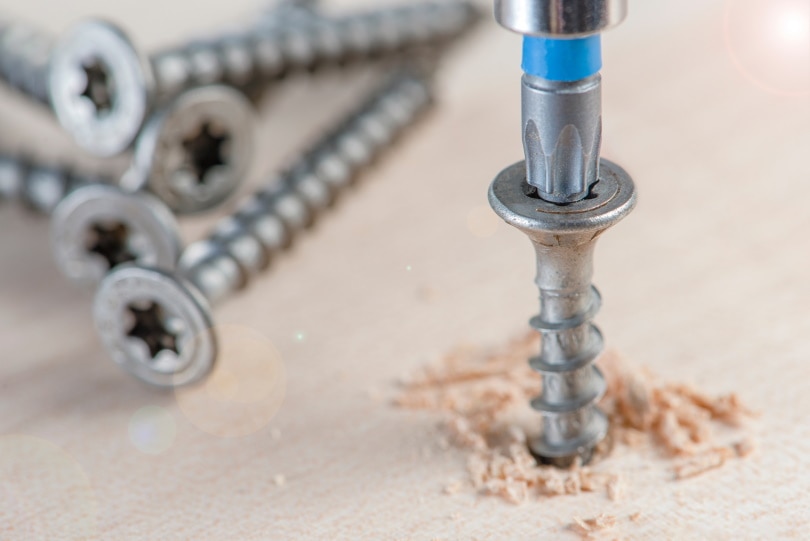
Screws aren’t really much of a marvel in the 21st century. Widely used and highly rated by contractors and DIY enthusiasts alike, they’re something of a workhorse. However, when they were first introduced, screws were the talk of the town. When did that happen, exactly? According to archeological discoveries, screws were pioneered by Archytas around the 4th century BC.
As for the modern-day fasteners, they were only invented in the 18th century, with mass production starting in 1760. And in the early 20th century, the Phillips head screws were made. Yes, screws have been a long time in the making, and in this guide, we’ll talk about the history of the screw in great detail. So, buckle up, and let’s dive into an exciting historical journey!
 The Origins: Ancient Greece, 400 BC
The Origins: Ancient Greece, 400 BC
It all started many centuries ago, and it was Archytas that invented the very first screws back in 400 BC. A great mathematician, he’s often referred to as the father of mechanics. So, what was the idea behind his creation? Archytas made a tool for extracting liquids: juice from grapes to make wine and oil from olives.
By the 3rd century, Archimedes took the concept to another level by building what’s known today as the “water screw”. It was mostly used by the Roman Empire as a water pump. Some experts believe that the Egyptians had built the wood screw long before Archimedes. Other studies claim it was Sennacherib’s invention. However, most evidence points to Archimedes as the man behind it.
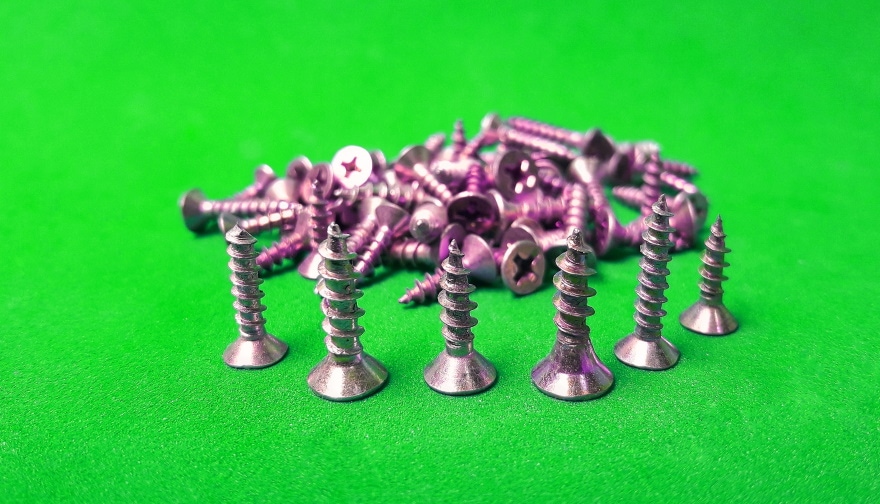
The Late 15th/Early 16th Centuries: Presses and Weapon Fasteners
So, does that mean screws were only good for producing wine and oil? Not quite: in the Middle Ages (the 5–15th centuries), the concept was modified to serve as a press in printing. And in the mid-1400s, screws were used as fasteners on furniture. Later, in the early 16th century, they played a key role in the assembly of weapons (firearms). When a bullet is fired, that creates strong vibrations that nails aren’t that great at handling.
Screws, in contrast, do a marvelous job of holding everything together thanks to the threads. Armor benefited from these new fasteners as well: they were used to put together the various pieces of a warrior’s plate armor. That’s why screws were an important element of any army during the 16th century.
Ancient Times: Tedious Manual Labor
This is important: back then, every single screw was made manually, by hand. People had to work for many hours before they could file the threads and get the heads ready. In the UK, it was common practice for blacksmiths to do the “heavy lifting”—make nails with heads—and hand them over to regular folks (usually whole families) that would then cut slots and file the threading.
As a result, the number of produced screws was incredibly low, and the quality left a lot to be desired. Furthermore, the lack of metal screws meant the price for one single unit was very high, and they were usually sold individually. But that all changed in the 17th century. How did that happen? Let’s talk about it next!
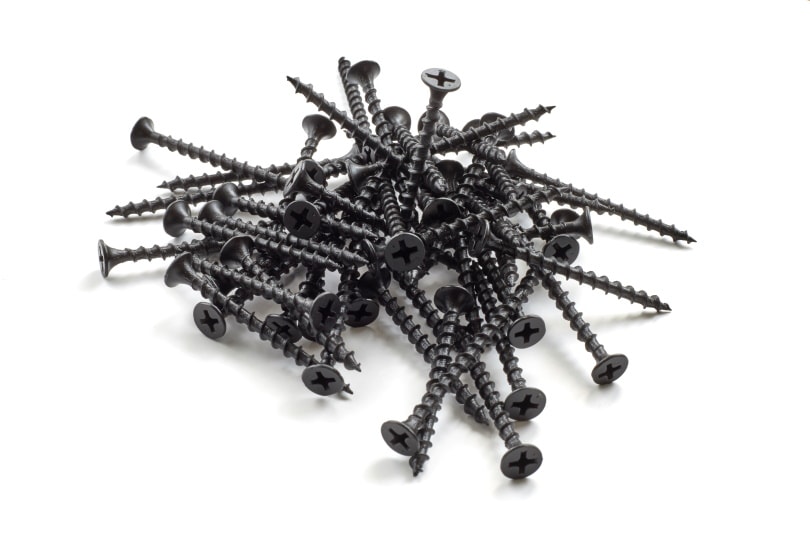
The 1700s: Opting for Mass Production
It’s hard to overestimate the importance of the First Industrial Revolution in human history. The transition from hand production to machines, mechanized factories, and tools allowed humankind to rise from poverty and step into a new era of prosperity. So, it shouldn’t come as a surprise that mass production of screws started in the late 1700s in Great Britain, right when and where the Revolution began.
In 1760, the Wyatt brothers (William and Job) built a machine with one important function: automatic manufacturing of screws. It was a very expensive invention and took 16 years to get the funds necessary to produce it. In 1776, it was finally ready. The screw machine was capable of building one premium-quality wood screw in 6–7 seconds.
The Late-18th Century: 16K Screws a Day and the First Lathe
Strangely enough, the Wyatt Brothers didn’t make any big profits. In fact, their business failed. The good news is—their concept didn’t go unnoticed. Instead, the new owners of the Wyatt machine were able to turn it into a booming enterprise. By the 1780s, they were already producing 16K screws a day which allowed them to set the foundation for mass production. For that, they only needed 30 workers.
In 1750, Antoine Thiout installed a screw drive on a lathe to make the machine’s carriage capable of moving in a semi-autonomous mode. Around that same time (in 1770), Jesse Ramsden, a brilliant instrument maker, came up with the world’s very first lathe for cutting screws. This lathe made industrial-scale production of metal screws possible.
And it was Henry Maudslay who popularized this mechanism. Essentially, he combined the Wyatt machine with Ramsden’s lathe and was the first entrepreneur to produce large volumes of machine screws. In the States, the same machinery was developed by David Wilkinson.
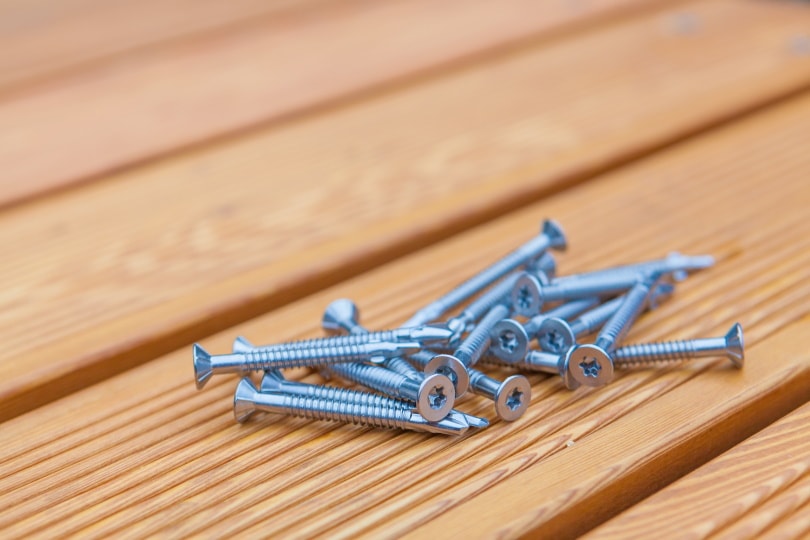
The 1800s: Perfecting the Formula
Thanks to the Wyatt Brothers, Ramsden, and Maudslay, threaded screws became the new standard. This took many decades, of course, but slowly yet steadily, production volumes were increasing while the prices were getting lower. The first blunt metal screw factory was founded in the US in 1821 by Hardman Philips. To run it, Thomas Lever, a renowned expert from the UK, used hardwood charcoal, water, and steam.
The mill wasn’t a success, though, and Philips didn’t make a huge profit off of it. He had to close it 15 years later. The reason: the new gimlet-pointed screws were much cheaper and more reliable. Now, the first machines for tapered threads were built in 1842 and they single-handedly turned the US into the biggest and most prominent screw producer on the planet. Tapered threads meant the screws could go in without any pre-drilling.
Around that same time (in 1841), Joseph Whitworth introduced standards for the number of threads and the angle at which they flank. Two decades later, these standards were officially accepted in the UK. In the US, the standards were a bit different (60-degree threads vs. 55-degree), but the core concepts were the same.
The 1900s: The Robertson and Phillips Screws
The early 20th century marked the arrival of various screw heads. The famous Robertson screw (the one with a square-shaped head) saw the light of day in 1908. Pioneered by P. L. Robertson, a Canadian inventor, the internal-wrenching hexagon drive entered the mass production stage three years later (in 1911). Did the Phillips head screws make a debut then as well?
They were introduced 22 years later (in 1930, to be exact). To this day, these screws are incredibly popular and are widely used in construction. More reliable, durable, and easier to work with, the Phillips screws had a stronger grip compared to what Robertson had to offer. That’s exactly why car manufacturers started using them for mass vehicle assembly as soon as they entered the scene.
The Phillips screws aren’t in large demand in Europe, though: over there, the Pozidriv screws are running the show. In the late 40s, after WWII, screw threads became even more standardized through the UTS standard and the ISO metric screw. Not much has changed since then. Screws that are being produced today follow the same standards established around 80 years ago.
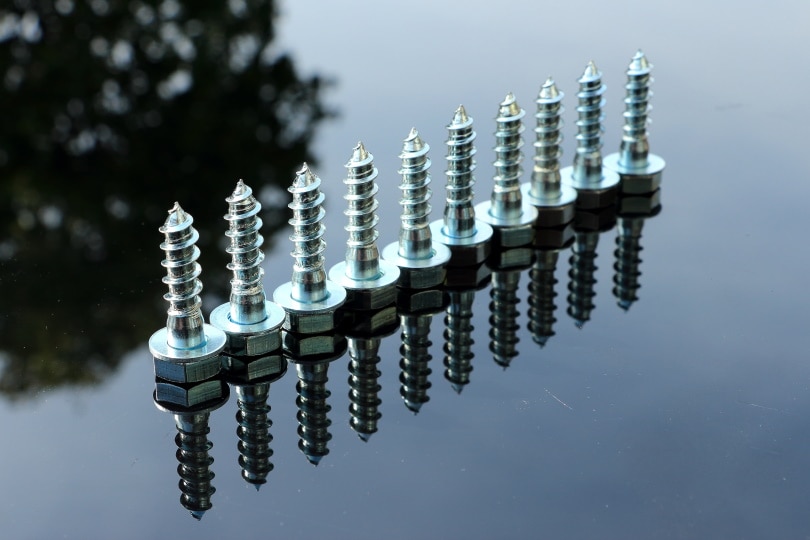
The 21st Century: Going Micro
And what about the 2000s, you might ask? Are there any big new developments? Well, not quite: as mentioned, the Phillips and the Robertson screws are still the go-to fasteners for most applications. With that said, the 21st century did see the production of the so-called miniature screws. These are mostly used in electronics—notebooks, tablets, and smartphones.
How Many Types of Screws are Out There?
There are hundreds of different brands on the market and even more screw varieties. However, if we’re talking about some of the most popular and useful screw types, we can break the list down into eight categories. So, before you go ahead and buy a set of screws or order it online, make sure it’s exactly what you need for the job:
- Wood screws. As the name suggests, these screws are specifically designed and made to easily pierce through the wood. They take little effort to go in and don’t damage the material.
- Lag screws. Humidity is the biggest enemy of any fastener. To avoid rust, use lag screws. Zinc-coated, they will keep corrosion at bay.
- Twin-fast screws. These go in twice as fast and have extended holding capabilities. How is that possible? Well, twin-fast screws are double-threaded!
- Double-ended screws. If you want to hide your joints, use double-ended screws. They are very similar to wood screws but don’t have a head on either side.
- Machine screws. Do you mostly work with metal? Then go with machine screws. Fully threaded, they’re a bit expensive but last for a long time.
- Sheet metal screws. For joining two different pieces of sheet metal, use screws of the same name. These have proven to have exceptional holding strength.
- Cap screws. The “caps” come with hexagonal heads and can only be driven in by a wrench or a spanner.
- Security screws. These fasteners can’t be unscrewed using a Phillips screwdriver. You’ll need special equipment for that.
The wood, machine, and sheet metal screws are the most commonly used types. The coated, double-threaded, and sheet metal screws are the close seconds.
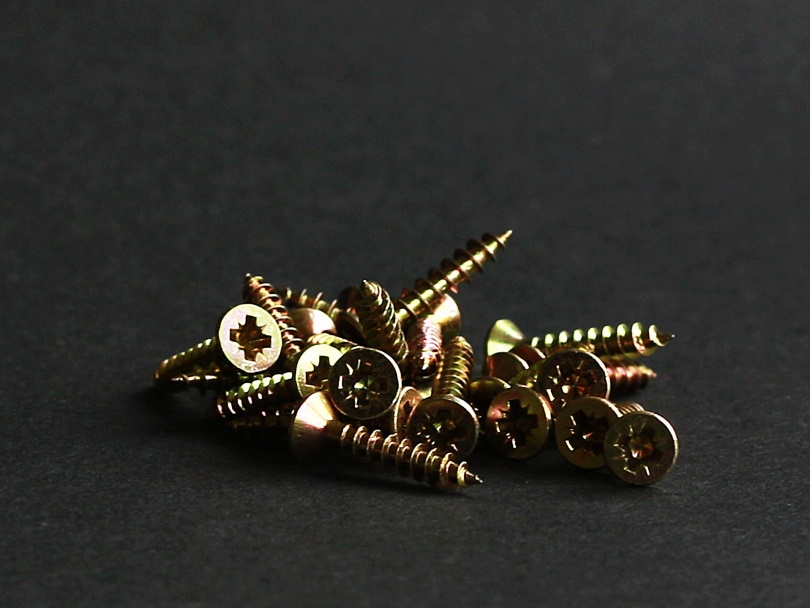
What Are Screws Made of?
Most bolts and screws you see at local stores are crafted from steel. But regular steel isn’t very strong against rust/corrosion. For that, go with stainless steel screws. Bronze, brass, titanium, and monel (a nickel and copper combo) are also highly resistant to natural elements. Surface coating is another excellent solution. We’re talking about zinc plating, of course.
Modern-day screws are distinguished based on their size, pressure resistance/strength, anti-rust protection, and application (wood, metal, or, let’s say, stone). As we just discussed, there are different types of screws out there and they are all intended for different tasks. That’s why it’s so important to pick one that meets the needs of your current project.
What About Nails? When Were They Invented?
Nails are known as the most ancient fasteners in human history. They date back to 3400 BC, Ancient Egypt. Some experts even claim that nails have been invented long before that. In any case, the interesting thing about nails is that they haven’t evolved much over the centuries. The very concept is still the same, even though these days, we do have different shapes, sizes, and uses.
Nails are incredibly straightforward, very cheap, and get the job done. You don’t even need a hammer or a nail gun to drive them in: any object that’s big and sturdy enough can be used to push a nail into a wall (or any other surface or object). Much like with screws, mass production of nails only started in the early 19th century with the rise of slitting mills.
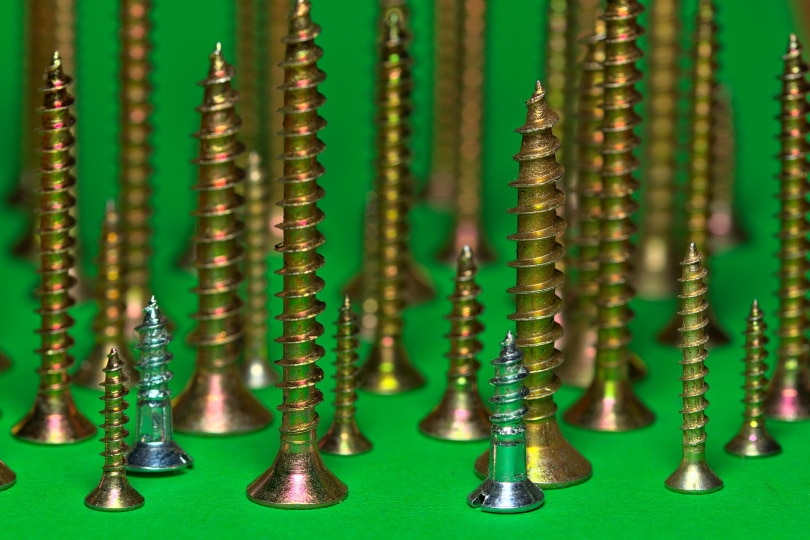
Screws vs Nails: Which Ones to Pick?
This largely depends on what you’re looking for in a fastener. If it’s tensile strength, screws should be your first pick. The pressure-handling capacity of screws is significantly higher compared to nails. That means they don’t break under pressure and can withstand extra weight. Kitchen cabinetry, subfloors, and porch railings will last much longer if you use screws instead of nails.
On top of that, screws take a lot less effort to remove and work nicely on gypsum and drywall. As long as you have a screwdriver, it will only take seconds to unscrew them. But nails take less time to install and cost less. Plus, it’s easier to hide nail heads (for finished carpentry). Besides, nails boast above-average shear strength (resistance to side-to-side/lateral pressure) and don’t snap. If you live in a windy area, use nails instead of screws.
 In Conclusion
In Conclusion
Screws have been around for thousands of years and are still one of the most commonly used fasteners out there. Reliable, easy to use, and widely available, they are the perfect pick for hanging something on the wall or holding pieces of wood/metal together. While it did take them quite a while to evolve, these days, it’s hard to imagine our lives without screws.
In this guide, we learned about the origins of screws, when the very first units were built, and Archimedes’ invention. Next, we jumped to the Medieval Times, the Industrial Revolution, and finally checked out the modern-day screws. So, the next time you drive one in, do remember about all the exciting stuff we discussed today!
- 6 Fun Facts About Nails
- Nailed It: The History of Nails
- Fasteners, Screws, and Hardware FAQs
- Nails vs. Screws: When to Use Each Kind of Fastener
- Edu – Sennacherib, Archimedes, and the Water Screw
- BoltScience- Information on Screw Threads
- Wikipedia – First Industrial Revolution
- Wikipedia – Screw History
- Lift Water with an Archimedes Screw
- The Evolution of the Screw and Screwdriver
- USMicroScrew – A Brief History of Screws
- Craftech – 8 little known facts about the history of the screw
- What Screw Point Is This? Understanding Screw Point Styles
- Unified Thread Standard
- Slitting Mill – Wikipedia
Featured Image Credit: SERSOLL, Shutterstock
Contents
 The Origins: Ancient Greece, 400 BC
The Origins: Ancient Greece, 400 BC